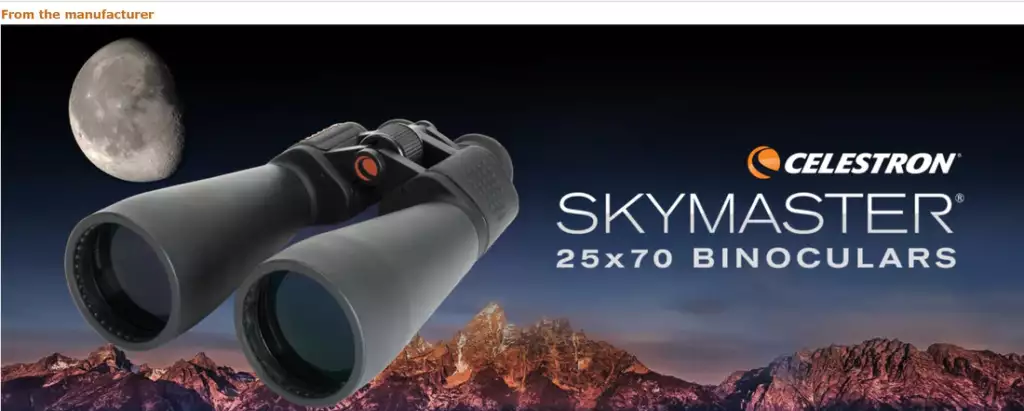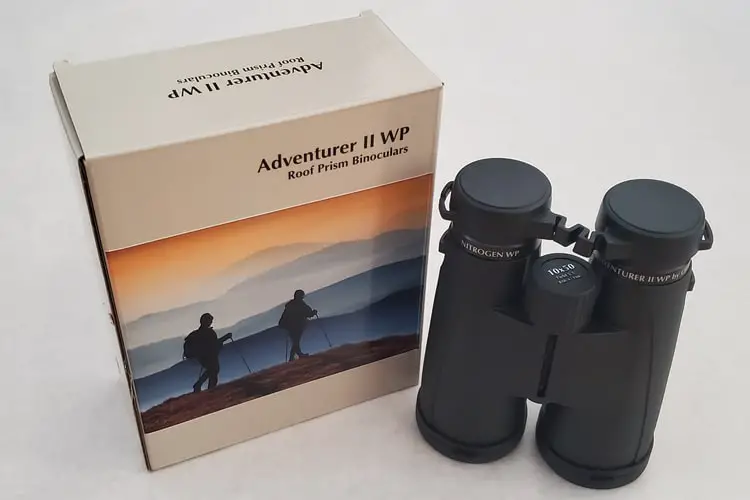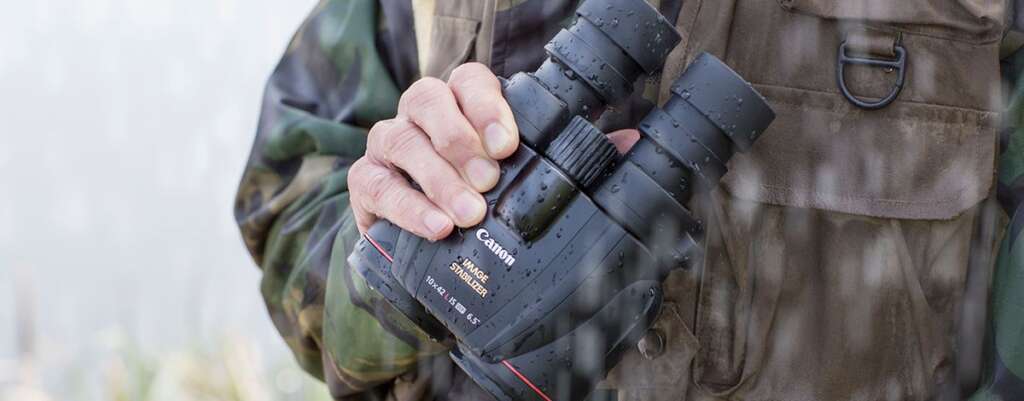The universe is a big place to discover, and binoculars for stargazing bring it a little closer than several light years. The stargazing binoculars have unimaginable magnification, and the objective lenses bring in the maximum amount of light. Average equipment cannot be considered when stargazing is in question. The most powerful binoculars for astronomy are heavy and large, but a few exceptions are lightweight, making them portable for you. You can have a pretty great look at the stars without the help of a tripod.
The best binoculars for stargazing and astronomy would depend on the nature of stargazing. If someone needs a multipurpose binocular, a smaller portable pair of binoculars will let one see the moon up close. However, if the need is to replace the telescope while travelling, the binoculars will be heavier and bigger. There are also many other options between models, like the ones that can let you see the deep sky or the ones that make the moon look closer to your home.
While telescopes are often considered an astronomer’s best friend, a pair of suitable binoculars for stargazing can be tough competition. They are also a cost-effective alternative for many. Since we already know that there are varieties of binoculars for stargazing, it will be wise to list a few of the best budget binoculars for astronomy to help one select the best pair.
Celestron SkyMaster 25×70 Binoculars

Celestron is a company well-reputed for its telescopes, but they have also achieved quite a name in the binoculars domain. The SkyMaster 25×70 can magnify the moon, planets and their moons, and even deep sky objects if you have the right knowledge. Their high 25x magnification traces the craters on the moon. The 70mm objective lens gathers a good amount of light though one might require a little practice for the view.
These binoculars weigh above 3 pounds, thus requiring a tripod to make them stable. These pairs of binoculars are relatively cheaper but do not compromise the impressive sights, magnification, or crisp views. These qualities make them the best binoculars for astronomy beginners.
Opticron Adventurer II WP 10X50

For anyone who is looking for the best budget binoculars for astronomy or is just looking for a pair of binoculars for stargazing, the Optician Adventurer II WP 10X50 is the right fit.
Despite their reasonable price, these are also considered among the best in the market. The magnification of 10x, as well as the lens size of 50mm, makes it one of the best that one can get in astronomy, resulting in some clear and crisp images with great contrast and an excellent FOV. The binoculars are also light, weighing just 770g, making sure it is easy to carry and can be used for a good period before one decides to set them down. They are waterproof, helping them crack into the list of the best budget binoculars for stargazing.
Canon 10x42L IS WP Binoculars

Though it has a price tag, it is simply one of the best binoculars for stargazing and planets. They are optically excellent, and the gyro-stabilisation Canon installed, taken from its most expensive camera lenses, makes it feel like it is standing on an invisible tripod. The ‘L’ in its name makes it the best and most expensive lens to be placed in front of a digital sensor. One can expect a quick, stable, and bright view through these binoculars.
The only drawback is that they are quite heavy, and one can struggle to hold them steady for a long period if electronic stabilisation is absent. They are also one of the most expensive pairs. But these drawbacks are nowhere when the plus points are to be considered. They are almost perfect for hand-held astronomy, making them one of the best binoculars for stargazing and planets.
Orion Giant View 25×100 Astronomy Binoculars

The Orion GiantView 25×100 Astronomy Binoculars are the most powerful and one of the best binoculars for stargazing and astronomy beginners. Though they are not telescopes, the magnification power of 25x brings distant objects like nebulae to view. The lenses of 100mm are huge, bringing in massive amounts of light and helping to create a wide field of view. This feature of the binocular helps in tracing tiny objects. It also comes with a hand-carrying case that provides protection and adds portability.
The only drawback is that since it has such huge lenses, it weighs as much as 10.1 pounds. The reinforced structure includes a massive built-in tripod adapter, and one would need a tripod. Without it, the binocular would neither be stabilised without help nor can one gaze for long. Despite the drawbacks, its service and that it comes in its storage case makes it one of the most powerful binoculars for stargazing and astronomy that should definitely be in your bag for the next trip!
Meade Instruments MasterClass Pro ED 10×42

The Meade Instruments MasterClass Pro ED 10×42 is one of the best binoculars for astronomy on cloudy nights. Meade being a reliable brand in the world of optics, the MasterClass Pro ED range of binoculars is premium and comes with a price tag. They are meant to satisfy even the most seasoned astronomer with breathtaking views of the lunar surface, planets, and the brightest deep sky objects. These are multi-coated optics and BAK-4 prisms, features that give accurate and crisp images.
The integrated field flattener eliminates any field curvature, and the 8-degree angle of vision is ideal for identifying nighttime things. This ensures the images are sharp from edge to edge. This premium pair of binoculars are nitrogen-purged and waterproof, preventing fogging and eliminating dust. This feature makes it one of the best binoculars for astronomy on cloudy nights. The range of binoculars reasonably weighs around 2lb. There would arise a need for using a tripod and adapter for a long duration of usage. Even this comes with a carry bag, harness, lens caps, and cleaning cloth.
Nikon Prostaff 3S 8X42

These are also among the best entry-level binoculars featured well above their price tag. They have a solid footing against the high-priced binoculars. They are the best for people who wear glasses because of the eye relief, unusually lengthy at 20.2mm, and the adjustable eyecups. Contrary to most other binoculars, they are extremely lightweight and can be used for long durations without having to rest them down on a tripod. They are comfortable to hold with their non-slippery rubber coating, and a shockproof outer layer ensures it doesn’t break if it is dropped accidentally. The focus wheel is rotatable, waterproof, and fog-proof, making it too good for the price tag.
The only drawback of this astronomy binocular is the absence of a tripod adapter. Though they are lightweight and can reduce luggage weight, it is still not advisable to use them for long hours to explore the night sky.
Celestron Cometron 7×50

This binocular goes to be the best for kids and young adults. The Celestron Cometron 7×50 is an ideal choice with its 50mm objective lenses and 7x magnification. Kids have superior night vision than adults, so they wouldn’t require the best glasses to see the same amount of light as adults. Children need something lightweight and comfortable to hold as heavy binoculars may tier them quickly.
Read more: Top 5 Super Cool Telescopes for Beginners
This set of astronomy binoculars is a cheap way to start learning about astronomy and sky watching; if it doesn’t work out, not much is lost. The compact binoculars with 7x magnification and a large 50mm objective lens do not need much bulk, but they still allow a lot of light to enter. They are strong, durable, lightweight, and portable, solving almost all problems young astronomers might face.
Gosky 10×42 Roof Prism

Having a limited budget doesn’t mean you have to give up on having good astronomy binoculars; this one is a great example of this! Some steadfast options exist, even with a cheap limit of $100. They are sufficient for all observational activities, including watching concerts, wildlife, and observing astronomical objects.
Although it’s not as crucial for stargazing, astronomy binoculars enthusiasts will appreciate that this model features a large lens size that makes it simple to watch moving objects. These astronomy binoculars prisms are more than capable of providing your eyes with high-resolution imagery.
Vixen sg 2.1×42 Binoculars

These low-power Japanese binoculars, with a mere 2.1x magnification, fall far short of the 8×42 or 10×50 requirements generally found in astronomy-focused binoculars. The Vixen SG 2.1×42 binoculars are unique in their ability. They display the Milky Way and the stars in the night sky from a unique perspective. The Vixen SG 2.1×42 has a massive 25o of angular field of view. Compared to most astronomy binoculars, which aim to give the user a close-up view of star clusters, nebulae, and galaxies, this is between 6.5o and 8o.
The Vixen SG 2.1×42 features a distinctive yet traditional Galilean optical design without a prism that consists of convex objective lenses and concave eyepiece lenses that combined produce right-side-up images. A brief aluminium bridge connects the barrels. Unlike most binoculars, the Vixen SG 2.1×42 lacks a neck strap that fastens to either side of the chassis. Instead, there is only a tiny hole in the metallic chassis that can be used to attach a nylon neck strap in the form of a loop.
These are our top picks for the best binoculars for stargazing or planets. The list also consists of the best budget astronomy binoculars because your fancy hobbies do not need to put a dent in your wallets. We hope you can find the perfect fit for your stargazing shenanigans!
